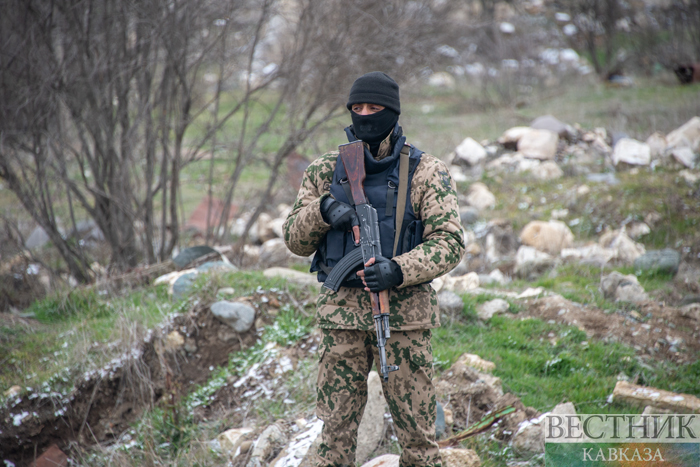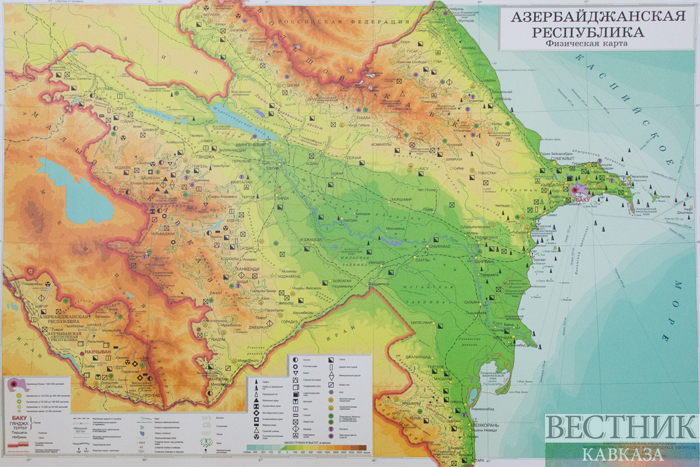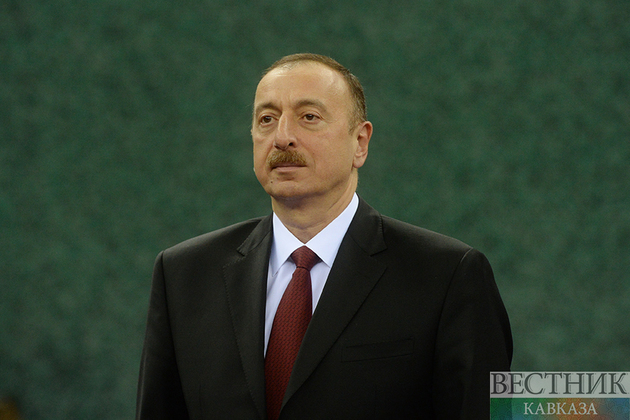The issue of the eight villages under occupation is always on the agenda today, President of Azerbaijan Ilham Aliyev said in the interview with local TV channels.
"This issue was discussed during my contacts with the prime minister of Armenia, including the last conversation on foot in St. Petersburg. I raised this issue, and this issue is also on the agenda of commissions dealing with delimitation. I should also inform you that the next meeting of the commissions is scheduled for this month, and this issue is on the agenda: the delimitation issue of that region, the Gazakh-Tovuz region," Ilham Aliyev said.
Occupied Azerbaijani villages
The president recalled that there are enclave and non-enclave villages among the villages under occupation, and Armenia is obliged to unconditionally return the four non-enclave villages to Azerbaijan.
"The villages that are enclave - an enclave Armenian village is in the territory of Azerbaijan - a separate expert group should be established and this issue should be discussed. We believe that all enclaves should be returned. The roads leading to these enclaves should have the necessary conditions and the people living there should be accommodated in these enclaves. So, this is our position," Ilham Aliyev said.
The head of state explained that Baku cannot understand Yerevan’s position: they are saying that the sides should retreat in a mirror-like fashion. But where to retreat? The Azerbaijani leader recalled that some of his colleagues asked him this question in May 2021.
"I asked where do we fall back. They said where we had come from. I said we had come from Baku, so shall be go back to Baku? We haven't been there in 30 years. If that was indeed a border, then Armenia should have recognized it as such and placed border markers. After all, they did not see it as a border. They believed that their border was in Aghdam. Because we went there from Baku, we hadn’t been there. So, where are we supposed to go back? Tell me where to go back and we will. There was no answer to my question," Ilham Aliyev said.

That is why, the head of state emphasized, Azerbaijan isn't going anywhere from the positions of both May 2021 and September last year, since this is exactly the border that should be established.
"However, our location, which is currently disputed by Armenia, does not include any settlement. The positions and heights where we stand have never been inhabited before. Today, Armenia continues to occupy our villages, and this is unacceptable. I want to note again that this issue will be clarified during the meeting of the commissions at the end of this month," Ilham Aliyev said.
Delimitation maps
The pesident also explained why Yerevan wants to use the maps of the 1970s as a delimitation basis - why maps of 1975, or 1970, or even the 1970s and 1990s, as expressed in some proposals.

He recalled that in the 20th century the lands of Azerbaijan were given to Armenia in parts.
"One day after the establishment of the Azerbaijan People’s Republic in 1918, unfortunately, the city of Iravan was handed over to Armenia. However, there was no reason for that. This is an ancient city of Azerbaijan. The Azerbaijani people lived there for centuries, and the history of Iravan, i.e. the historical appearance that is being erased today confirms the existence of Azerbaijani architectural monuments, their centuries-old existence. That it was a great historical crime," Ilham Aliyev said.
The president noted that in November, 1920, the Soviet government took the bigger part of Western Zangezur from Azerbaijan and gave it to Armenia. The head of state recalled that there is a map of the Azerbaijan People's Republic and there is Zangezur on it - not eastern or western, all of Zangezur was the territory of Azerbaijan.
"Such gifts of land continued over the years. The last such gift of land was made in May 1969. By then, our lands were given to Armenia in parts, and from an area of about 100,000 square km - I am talking about the territory of the Azerbaijan People’s Republic - it dropped to 86,600 square km. After Heydar Aliyev was elected the leader of Azerbaijan in July 1969, these land gifts and this process was stopped," Ilham Aliyev said.
This is why Armenia wanted to use the maps of the 1970s as a basis, the head of state noted, adding that there is no methodological and political basis for that. If they refer to the political foundations, then they should take either the period of the establishment of the Azerbaijan People’s Republic or the period of Sovietization as a point of reference - it is a political methodology. If they prefer the chronological methodology, then they should look at the maps at the beginning of the 20th century and build work on these maps.
"That is, you are leaving out the 1960s, 1950s and 1940s and want to refer to the 1970s. Precisely because our historical lands had already been given to them. This is why we strongly objected to that and continue to do so. Our position is quite fair and logical. We should refer to a political methodology as a basis, a chronology method should be taken as a basis, or we should not base our work on any map at all. A commission was established. Expert groups should be set up to speed up the work of the commission. Let them go around those places and define that border. Because today our border is conditional in nature," Ilham Aliyev said.






